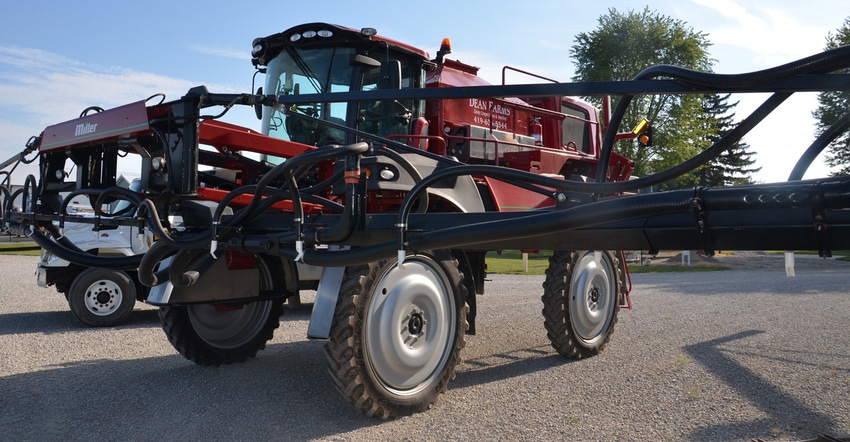August 7, 2019

By Amanda Kautz
Corn and soybeans were planted later than normal this spring. That means harvest will likely run on the late side as well. All this means your cover crop seeding method and choice of species become even more important.
If you intend to plant anything other than cereal rye, triticale or winter barley, you must consider and use seeding methods other than drilling after harvest.
Also, if the main purpose of your cover crop is to control soil erosion, you need to increase seeding rates of cover crops drilled after harvest. If fall 2018 taught us anything, it’s that late-planted cover crops provide little to no protection from soil erosion due to negligible growth in cold, fall conditions.
If you need a cover crop seeding method other than drilling, here are three options. Each has pluses and minuses. Also, remember that before choosing to seed cover crops before harvest, check plant-back restrictions on herbicide labels for products applied in crops this summer.
1. Aerial seeding. Aerial seeding is great if you’re dealing with a late harvest, especially if it remains wet. You may sacrifice some seed loss for earlier establishment, but in return, there’s no soil disturbance at all. This seeding method is also done while the corn and soybean crops are still in the field, allowing for more choice of cover crop species for your mix.
Aerial seeding does come with a higher price tag for application costs and for using a higher seeding rate. Another downfall can be more variable stand establishment if moisture isn’t available. Less consistent seed-to-soil contact can lead to less-than-desirable cover crop success.
2. High-clearance seeder. The main benefit of applying with a high-clearance seeder is being able to seed earlier in the season. The application occurs while the grain crop is still standing.
The seed loss is minimal, but the seed-to-soil contact isn’t as great as using a drill, planter or vertical-tillage tool. This method also may result in some crop damage due to preharvest application.
3. Combine seeder. What better way to seed cover crops than to do it during harvest? Seeding and harvest is all done in one pass. Seed loss is minimal, and timing is normally good.
However, with later combining dates this year, it may still be too late if you’re trying to establish species that need to be seeded earlier in the season to get good growth.
The other downside of this method is that refilling the seeder frequently may slow down harvest. This isn’t always something a producer wants to do. Finding the right seeder for your combine may be a challenge as well.
If you have questions about what would work best for your operation, contact your local conservation partnership office. They’re available to help with seeding rates, dates and other useful information.
Kautz is a district conservationist with the Natural Resources Conservation Service. She writes on behalf of the Indiana Conservation Partnership.
You May Also Like




